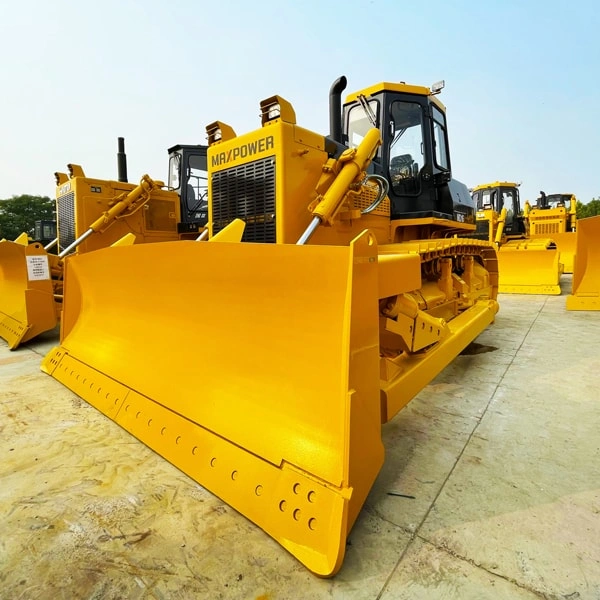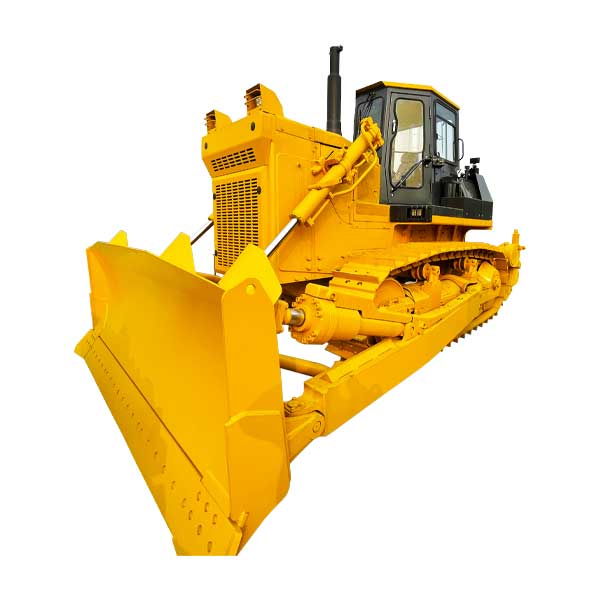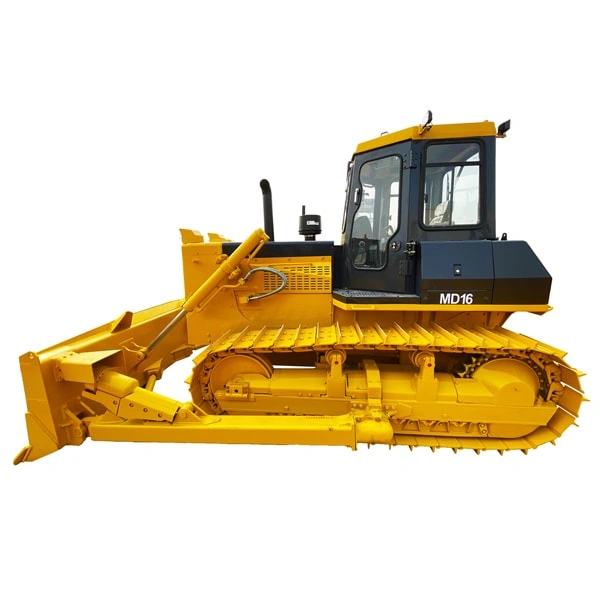Introduction
As infrastructure development projects continue to grow in scale and complexity around the world, construction companies face increasing pressure to complete projects on time and on budget. One strategy that has proven effective for maximizing efficiency is integrating dozer construction techniques into the development process. This blog post will explore how dozers can streamline earthmoving, grading, and site preparation work to help projects stay on schedule.
Dozer Construction Basic

Before delving into specific applications, it’s important to understand the basics of dozer construction. Dozers, also known as bulldozers or graders, are heavy construction vehicles equipped with a large blade used for pushing or pulling material. The three main types of dozers are the crawler dozer, wheel dozer, and motor grader. Crawler dozers are tracked vehicles well-suited for heavy earthmoving in soft or uneven terrain. Wheel dozers have wheels for greater mobility and speed on prepared surfaces. Motor graders are used primarily for final grading and finishing of roads, parking lots, and other paved areas.
No matter the specific model, all dozers have tremendous power-to-weight ratios that allow them to shift large volumes of dirt, gravel, and other earthen materials quickly and efficiently. Their wide blades can work, move, and spread material over a large area in one pass. These capabilities make dozers uniquely valuable for initial site clearing/grubbing, rough grading of roads/pads, stockpiling excavated material, creating berms/embankments, and more.
Applications in Infrastructure Projects
To illustrate how incorporating dozer construction can streamline infrastructure work, consider some common applications:
Site Preparation – For developing new roadways, buildings, utility corridors or other infrastructure, dozers excel at the initial site preparation work. Their blades can clear vegetation and topsoil in one smooth motion. Crawler dozers can also work efficiently in dense, rocky areas to ready the site for subsequent construction phases.
Earthmoving & Embankments – Dozers move more dirt faster than any other equipment. Whether hauling fill for road embankments/retaining walls or excavating material for utility trenches, dozers maximize productivity. Contractors can make multiple passes per load and track dozers don’t require base material like wheels.
Rough Grading – Once the site is cleared, dozers take over rough grading of roads, building pads and other areas. Their accuracy and ability to work large areas quickly establishes general site elevations before bringing in other equipment for fine grading.
Stockpiling – Excavated material must be properly stockpiled for future use or disposal. Dozers can rapidly load, transport and shape material into neat, stable piles with minimal effort.
As shown in the table below, a single dozer can shift far more material per hour than a loader or excavator, meaning projects see significant time savings when dozers take the lead in bulk earthmoving tasks.
| Equipment | Cubic Yards Moved Per Hour |
|---|---|
| Track Dozer | 1,500-3,000 |
| Wheel Loader | 300-600 |
| Excavator | 200-400 |
Maximizing Efficiency with Dozer Fleets

On large, complex infrastructure jobs where earthmoving is a major component, contractors can maximize efficiency by dedicating an entire fleet of dozers to these tasks. A well-coordinated dozer fleet works like a perfectly choreographed machine.
For example, on a major road-widening project, one dozer removes vegetation and grades the road surface. Another cuts roadside ditches and forms embankments while a third loads excavated material directly into haul trucks. Meanwhile, additional dozers shape and grade stockpile areas, keeping material moving.
With dozers dedicated solely to earthmoving tasks from start to finish, projects see less idling from other equipment waiting for material to be moved. Dozers also require fewer operators versus loaders, excavators and haul trucks, reducing labor costs. Contractors save further by keeping dozers working versus moving different rigs on and off the site.
When the entire site design takes dozer capabilities into account from the beginning, they form the backbone of the most efficient earthmoving operation possible. But their integration doesn’t end there. Dozers also play vital roles in post-construction tasks.
Conclusion
In conclusion, integrating dozers into every phase of infrastructure construction provides unmatched benefits for maximizing project efficiency. Their powerful earthmoving capabilities allow dozers to rapidly shift more material than any other equipment. When dedicated dozer fleets handle bulk earthmoving tasks from start to finish, contractors save tremendously on equipment, labor and scheduling costs. Modern technology solutions only improve dozer productivity further. Overall, making dozer construction a core part of the site development process helps projects stay on budget and on schedule for successful outcomes.
FAQs
What is the role of dozer construction in infrastructure development projects?
- Answer: Dozer construction plays a crucial role in infrastructure development by facilitating tasks such as land clearing, grading, site preparation, and road construction. It helps in maximizing efficiency and ensuring the successful completion of projects.
How does integrating dozer construction contribute to maximizing efficiency in infrastructure development?
- Answer: Integrating dozer construction streamlines various construction processes, leading to faster project completion, improved accuracy in grading and leveling, reduced labor costs, and enhanced safety on construction sites. This ultimately results in maximizing overall project efficiency.
What are the key benefits of using dozer construction in infrastructure projects?
- Answer: Some key benefits of utilizing dozer construction include increased productivity due to the ability to handle large volumes of earth quickly, precise grading capabilities for achieving desired elevations, versatility in performing a wide range of tasks, and reduced environmental impact compared to traditional methods.
How do different types of dozers contribute to infrastructure development?
- Answer: Various types of dozers, such as crawler dozers and wheel dozers, offer different features and capabilities suitable for different aspects of infrastructure development. Crawler dozers are ideal for heavy-duty earthmoving tasks, while wheel dozers excel in applications requiring mobility and versatility.
What are some best practices for integrating dozer construction in infrastructure projects?
- Answer: Best practices include thorough project planning and site analysis, regular maintenance of dozer equipment to ensure optimal performance, proper training for operators to maximize efficiency and safety, and adherence to environmental regulations to minimize ecological impact during construction activities.







-150x150.webp)
